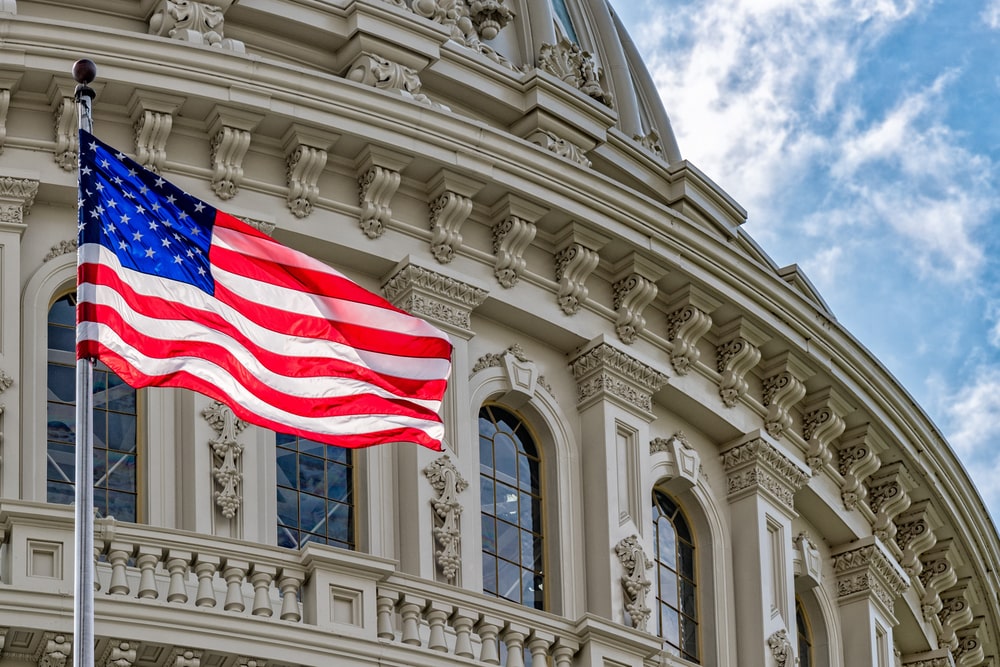The US’ debt ceiling represents the amount that the government can borrow to meet its existing commitments enforced under past Presidential regimes. Congress imposes the debt ceiling, and has the authority to increase the limit, as government spending effectively ‘maxes’ out on the amount of debt it is authorised to have. The date is known as the ‘X’ date, which falls on Thursday, 1st June. If a deal isn’t made by the Democratic party with Congress that will see them authorise lifting the ceiling on or before this date, the US could default on its debt and run our of funds - with potentially catastrophic repercussions. The months-long standoff has spooked Wall Street, weighing on U.S. stocks and pushing the nation's cost of borrowing higher. U.S. stock indexes fell on Wednesday on debt-ceiling concerns.
The US reaches its debt ceiling relatively regularly - it was increased seven times under President George W. Bush’s two terms, for example. The limit is usually reached as US spending increases but it isn’t matched by its revenue, although it’s worth noting that this doesn’t necessarily mean that US debt is continually increasing. The debt ceiling isn’t related to new government spending i.e., public projects or investments enforced by an incumbent presidential regime. Instead, the debt ceiling refers to the amount the government can borrow to meet existing obligations, which include paying interest on national debt, social security payments, medicare benefits, military salaries and so on.
Who Does The US Owe Money To?
The US’ debt ceiling sits at around $31.4 trillion…in short: the US owes a lot of people a lot of money. Around 80% of the US’ debt is held by the public, which includes foreign and domestic parties. The Federal Reserve is the largest holder of US debt, and, to some degree, its control over the selling and purchase of treasury securities explains why. The Federal Reserve controls the selling and purchase of treasury securities as a way to raise the capital the country needs to operate without relying on revenue generated through taxation. Treasury securities include treasury notes, treasury bills, treasury inflation-protected securities and floating-rate notes. These securities are backed by the US government and they are considered low-to-no risk.
Domestic holders of US debt are largely mutual funds, insurance companies, pension funds and the federal reserve, although a large portion of it is held by other creditors such as local governments. Foreigners are significant creditors of the US with many countries investing in treasury securities via the Federal Reserve with Switzerland, China, Japan, Luxembourg and the UK all holding significant US debt. A number of other countries are also creditors, albeit in smaller amounts.
What’s The Story With The Debt Ceiling?
The US government had reached its debt ceiling in January, which meant it can’t borrow any more money to meet its legal obligations. So, the options are either that it defaults on its current debt, or Congress allows it to raise the ceiling on the debt, authorising more borrowing. The deadline to authorise the debt limit falls next week and negotiations between the President and Congress usually go right to the line because raising the debt ceiling is always contentious, and politically charged, especially when the ruling party does not have a majority in the House – as is the case with the current administration.
Get in the Know
Subscribe to our newsletter
The topic is complex and nuanced but (broadly) Republicans want to limit government spending by making savings in social welfare and wellbeing programmes which can be at odds with the Democrat’s political agenda. The President in power when the debt ceiling needs to be raised usually wants to negotiate for an authorisation to increase it with as few conditions as possible, which is usually to the benefit of their Party. Tax is usually central to the debate, with Democrats often (although not always) pushing for what can effectively be wealth and corporation taxes to increase government revenue without needing to raise the debt ceiling.
Congress (made up of The Senate and the House of Representatives) is the legislative branch of the US government, and as such is responsible for approving the laws introduced by a President and - critically - representing the interests of the US people and passing the federal budget. Because Congress is made up of different political representatives, authorising the debt limit requires making a majority of votes to approve the ceiling raise can be garnered in Congress and The Senate.
Currently, there is a political stalemate, which means the future of the American economy and worldwide markets is in purgatory. If an agreement cannot be reached quickly, there may be explosive results.
Will The US Default Or Will The Debt Ceiling Raise Not Be Authorised?
Both scenarios could happen, but realistically, they’re relatively unlikely on the basis of the massive repercussions they’d have for the US in the short, medium and long term.
The US defaulting on its debt would mean that global financial markets would likely take a huge hit - there would be a huge sell-off of US treasury bonds and securities on the back of global fears the US government couldn't meet its financial obligations. The fiscal, social and economic repercussions would likely be catastrophic. As well as being faced with a loss of confidence in the US’ economic strength (not to mention the possibility of the dollar losing its position as the world’s primary reserve currency), the US could also possibly face significant domestic unrest with salaries and benefits not being paid and the associated fallout.
A sharp recession would almost certainly follow if the US defaulted, as well as a potential credit crunch, which would make borrowing very expensive (for the government and for businesses and individuals) ultimately hampering economic growth. All these factors would likely spill over into global markets, but the damage to the US would be unprecedented. In the unlikely event an agreement isn’t reached with Congress to raise the US debt ceiling by the June 1 deadline, the US government would most probably prioritise repaying some of its debt and using extraordinary measures at its disposal to meet its financial obligations for as long as possible while trying to negotiate a package that would pass through Congress, rather than risking default.
The views and opinions expressed in this piece are those of the author and do not constitute advice or a recommendation. They do not necessarily reflect the official policy or position of Enness and are not intended to indicate any market or industry viewpoints or those of other industry professionals




